I. Introduction
Glass, a transparent material formed from the fusion of sand, soda ash, and limestone. Has been central to various industries for centuries. Glass is critical in the technology sector, serving as the primary material for smartphone screens, fiber-optic cables, and solar cells. This versatility makes glass almost indispensable in modern society.
However, as essential as glass has become, the search for alternatives often arises due to cost, weight, and fragility concerns. The production and processing of glass can be costly, given the high temperatures required for melting and molding. Its weight adds to transportation expenses, particularly in the construction and automotive industries. Furthermore, glass is prone to breakage, posing risks of injury and added costs for replacements. These challenges drive the demand for reduced cost, lighter weight, and greater resilience.
Potential alternatives to glass include a wide array of materials. Each with its own set of characteristics suited to different applications. Among them, polycarbonate and acrylic stand out for their clarity and durability. They offer substantial savings in scenarios that demand shatterproof solutions. Polyethylene terephthalate (PET) emerges as a favorable option in packaging. It has advantages like recyclability and lower shipping weight. Other contenders like aerogel, with its exceptional insulating properties, and bio-based plastics, with their sustainability appeal, present their unique benefits.
In evaluating these alternatives, critical criteria include cost, weight, and strength. Factors such as optical clarity, UV resistance, ease of fabrication, and environmental impact also play critical roles. It is essential to consider the specific requirements of each application to determine the most suitable replacement for glass. Polycarbonate, Acrylic, PET, and Aerogel, are cost-effective alternatives to glass.
- II. Polycarbonate as analternatives to glass
A. Description of Polycarbonate Material

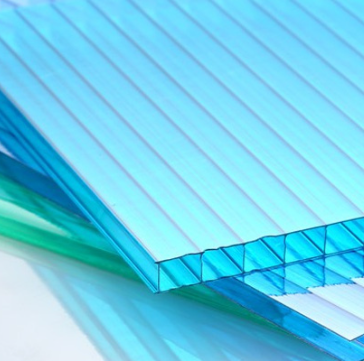
Polycarbonate, a robust thermoplastic, stands out with its impressive strength and resilience. Manufacturers create this versatile material by linking bisphenol A with carbonate groups, resulting in a clear and durable plastic. Polycarbonate sheets can withstand extreme force and are virtually unbreakable, which gives them a significant edge over glass. The material’s flexibility allows it to be shaped at room temperature without cracking or breaking. It is suitable for a broad range of designs and applications.
B. Comparison of Cost and Performance with Glass
When assessing the cost-effectiveness of polycarbonate against glass, one must look beyond the initial expenditure. Polycarbonate’s long-term benefits manifest in its resistance to impact, longevity, and less frequent need for replacement. It outshines glass in both of durability and weight, as it is significantly lighter, reducing shipping and handling costs substantially.
C. Applications Where Polycarbonate is Preferable
Polycarbonate proves to be the material of choice in scenarios where safety and impact resistance are paramount. For instance, it serves as the ideal candidate for bulletproof windows, eyewear lenses, and outdoor lighting fixtures. In the automotive industry, polycarbonate finds use in creating lighter and more durable headlight covers. It is popular in constructing greenhouses, Its weather resistance and ultraviolet light ensure long-term transparency and protection for plants.
D. Limitations of Polycarbonate
While polycarbonate offers numerous advantages, it is not without its limitations. The material can be susceptible to scratches and requires an additional coating to protect against abrasion and UV degradation. Polycarbonate might also exhibit a lower resistance to certain chemicals. Moreover, as with any plastic, its life cycle impact and recyclability must be addressed to ensure responsible use and disposal.
Polycarbonate becomes clear that the material presents a compelling case based on strength, weight, and versatility. However, careful analysis of the specific application and environment is crucial to determine if polycarbonate is the best choice.
- III. Acrylic (PMMA) – A Versatile Substitute, an alternatives to glass
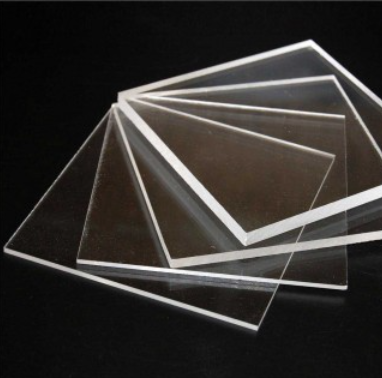
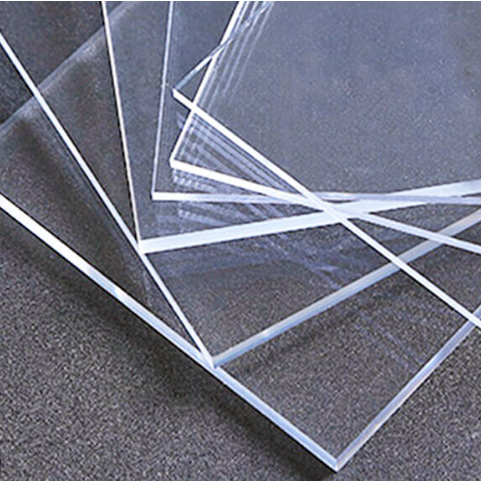
A. Properties of Acrylic
Acrylic, known chemically as polymethyl methacrylate (PMMA), is a synthetic polymer prized for its optical clarity and resilience. It mimics the aesthetic of glass but stands out for being lighter and more impact-resistant. Unlike glass, acrylic can absorb energy from impacts without shattering, ensuring safety and longevity. Fabrication of acrylic is straightforward, as it responds well to cutting, drilling, and forming. Making it a versatile material for various designs and applications.
B. Cost Benefits and Usability in Various Industries
The cost benefits of acrylic make it a preferred choice in many industries. It offers a less expensive alternative to both glass and polycarbonate, without compromising significantly on quality. The material’s lighter weight translates to reduced shipping and handling costs. Its durability also means less frequent replacements, leading to long-term savings. Acrylic finds widespread use in industries ranging from construction and automotive to retail and advertising. It is employed in windows, light fixtures, signage, and displays.
C. Situations Where Acrylic Outshines Glass
Acrylic shines in situations where its unique combination of properties, such as lightweight, impact resistance, and moldability. These offer an advantage over glass. Retail displays favor acrylic for its shatter-resistant quality and ease of shaping into eye-catching designs. Furthermore, in applications where precise optical clarity is not essential, acrylic serves as an economical and practical substitute.
D. Drawbacks of Using Acrylic
Despite its many advantages, acrylic does have some drawbacks. It is more prone to scratching than glass, which can mar its transparent surface and reduce visibility over time. For this reason, acrylic items often require a protective coating to extend their lifespan. Additionally, acrylic can be sensitive to certain chemicals and solvents, making it unsuitable for some industrial environments without additional treatment. While acrylic is recyclable, its environmental footprint still needs consideration during the production and disposal processes.
In summary, acrylic presents a versatile and cost-effective alternative to glass that meets the demands of various applications. It offers the clear visual appeal of glass but with greater safety and less weight. Industries benefit from its affordability and adaptability, yet they must also factor in its susceptibility to scratching and chemical sensitivity. Considering these aspects, acrylic often strikes an optimal balance for those seeking a functional and economical replacement for traditional glass.
- IV. Polyethylene Terephthalate (PET) in Packaging, alternatives to glass
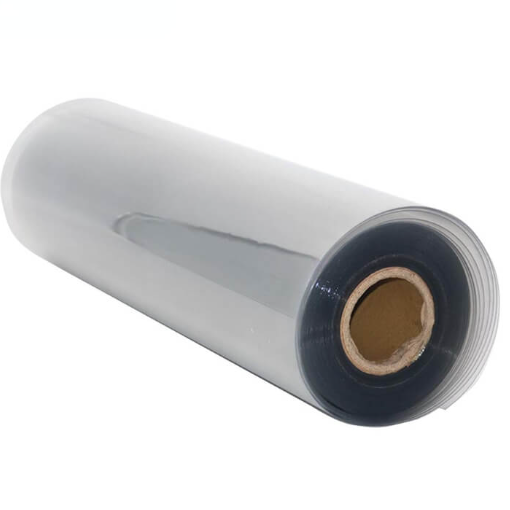
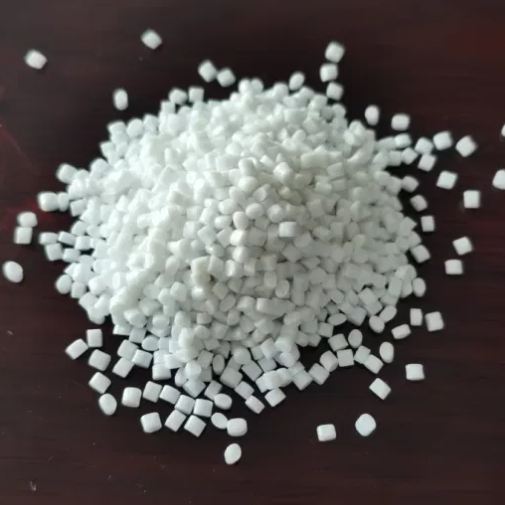
A. Introduction to PET and its Characteristics
Polyethylene Terephthalate, commonly known as PET. It is molded into plastic bottles and containers for packaging foods and beverages, personal care products, and other consumer goods. As a highly recyclable thermoplastic, PET is distinguished by its strength, thermo-stability, and transparency. It is also lightweight and shatterproof, which are essential properties for the transportation and storage of goods. PET’s versatility allows it to be formed into a variety of shapes and sizes. Catering to a wide range of packaging needs.
B. Advantages of PET over Glass in Packaging
PET boasts several advantages over glass in the realm of packaging. Its lighter weight significantly reduces transportation costs and the carbon footprint associated with shipping. The material’s resilience to breakage ensures product safety during transit and handling, minimizing the risk of product loss and injury. The energy required to produce PET containers is considerably lower than that for glass, resulting in further economic and environmental benefits. The convenience of PET’s design flexibility also allows for innovation in packaging, which can enhance brand appeal and consumer experience.
C. Recycling and Environmental Impact
One of the most compelling attributes of PET is its high recyclability. Unlike some other plastics, PET can be recycled multiple times without significant degradation in quality. Recycling systems for PET are well-established in many parts of the world. Making it a more environmentally responsible choice for companies and consumers alike.
D. Limitations and Considerations in PET Usage
Despite its many benefits, PET usage comes with certain limitations and considerations. While PET is recyclable, the actual rates of recycling can vary widely by region. Discarded PET can contribute to plastic pollution if not properly managed. The material also has limitations when it comes to holding certain types of liquids. As alcoholic beverages or hot liquids, which may require additional barrier properties to preserve content integrity. Companies must carefully evaluate these factors alongside the advantages when choosing PET as a packaging solution.
PET presents a cost-effective and versatile alternative to glass for packaging, offering advantages in terms of weight, safety, and sustainability. However, stakeholders must navigate its recyclability challenges and suitability for various contents to maximize its potential benefits. With responsible use and improved recycling efforts, PET can play a significant role in reducing the environmental impact of packaging.
- V. Aerogel – The Insulation Alternative

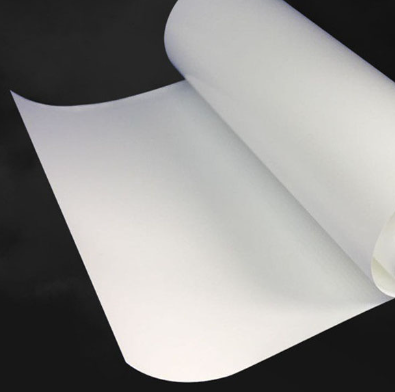
A. Explanation of What Aerogel Is
Aerogel is an ultralight material derived from a gel. The result is a solid with extremely low density and thermal conductivity. Nicknamed ‘frozen smoke’ for its translucent appearance, aerogel boasts remarkable insulating properties. Aerogels can be made from a variety of chemical compounds
B. Comparison of Aerogel and Glass in Terms of Insulation
In terms of insulation, aerogel outperforms traditional glass by a significant margin. Its structure, which is composed of up to 99.8% air, inhibits gas conduction, greatly reducing heat transfer. This insulating capability allows aerogel to be used in applications where space is limited and high thermal resistance is essential. Compared to glass, aerogel provides similar light transmission with much better insulating performance. Making it an ideal material for energy-efficient window designs.
C. Applications of Aerogel in Construction and Industry
The construction and industrial sectors find aerogel particularly beneficial due to its superior insulation properties. In construction, aerogel is used to enhance the thermal performance of buildings without compromising on space or light. Thin aerogel panels can replace bulky traditional insulation, freeing up interior space while reducing heating and cooling costs. In industrial applications, aerogel is employed to insulate pipes and other equipment that operate at a wide range of temperatures. Protecting them from heat loss or gain.
D. Challenges Associated with the Use of Aerogel
However, the adoption of aerogel comes with its challenges. The material has historically been expensive to produce, limiting its widespread application. Additionally, aerogel can be relatively fragile and difficult to handle, requiring careful installation to prevent damage. The dust created during the cutting or shaping of aerogel panels can also pose a health risk. As a result, while aerogel offers exceptional insulating properties, its use requires careful consideration of these challenges.
In summary, while aerogel presents itself as a high-performance alternative to glass in insulation, it is not without its drawbacks. Its use in energy-efficient designs is growing, yet cost and practicality remain barriers to its widespread adoption. Aerogel may become an increasingly accessible option for advanced insulation solutions in various industries.
VI. Conclusion
A. Summary of Glass Alternatives and Their Respective Benefits
The exploration of glass alternatives has unveiled a multitude of materials, each with its own set of advantages. Polycarbonate stands out for its unmatched impact resistance and suitability in safety applications. Acrylic (PMMA) garners attention for its excellent clarity, lightweight, and cost benefits, making it ideal for retail and decorative purposes. Polyethylene Terephthalate (PET) is favored in the packaging industry for its recyclability and efficiency in protecting and transporting consumer goods. Aerogel is celebrated for its exceptional insulation properties, revolutionizing energy efficiency in construction and industry. Each alternative serves a unique purpose and offers a set of benefits that challenge the traditional dominance of glass.
B. The Balance Between Cost-Effectiveness and Functionality
When evaluating these materials, the balance between cost-effectiveness and functionality emerges as a critical consideration. Although aerogel may present a higher upfront cost, its superior insulation could lead to significant energy savings over time. Similarly, while PET offers economic packaging options, considerations around its recyclability and environmental impact must shape its use.
C. The Importance of Ongoing Research and Material Development
Ongoing research and development play a pivotal role in advancing these materials. Innovations in polymer science and material engineering continue to enhance the performance and reduce the costs of glass alternatives. As new formulations and composites emerge, the potential applications expand, along with improvements in sustainability and functionality. The advancement of green chemistry and eco-friendly manufacturing processes is central to ensuring that material innovation aligns with environmental stewardship.
D. Encouragement for Broader Acceptance and Further Exploration of Alternatives
The future is bright for glass alternatives, but their broader acceptance requires a willingness to embrace change and innovation. Industries, consumers, and policymakers must consider these materials not just as substitutes but as superior options in appropriate contexts. As the world continues to evolve. The pursuit of alternative materials will drive technological progress and contribute to a more sustainable and resource-efficient global economy.
In conclusion, while glass has long been a staple in various applications, the evolution of alternative materials offers compelling opportunities. These alternatives can provide enhanced performance, economic savings, and environmental benefits, expanding the horizons of design, construction, and consumer products. As the industry adapts to these materials. Ongoing research and development are essential to refine their properties and increase their competitive edge. Embracing these glass substitutes are a testament to human ingenuity and a step toward a more innovative and sustainable future.
Fairwill Display, a white hair store fixture, is your go-to expert for retail display solutions. Based in China, we specialize in the production store fixtures. Mostly like high-end glass showcases, slatwall floor stands, checkout counters, and other store fixtures. We welcome brand manufacturers, wholesalers, distributors, retailers, and end customers around the globe.
With a dedicated factory team of 30, we take pride in successfully exporting our products to various countries. They are United States, United Kingdom, Sweden, Australia, France, and Spain. Our B2B business model ensures that we understand and cater to the specific needs of our commercial clients. We offer them custom-tailored products and services.
At Fairwill Display, we believe that efficient communication is one of our core strengths. Our team is deeply knowledgeable about our products. We also maintain keen insight into global market trends and possess extensive foreign trade experience. These attributes enable us to offer quick responses and precise market-oriented services, turning complex needs into simple, effective solutions.
Choosing us means choosing a reliable partner to enhance your retail display and maximize your sales potential. Let’s together witness the growth and brilliance of your brand.
